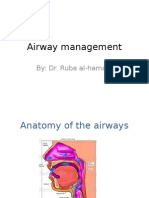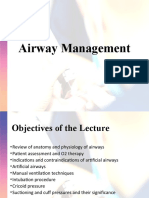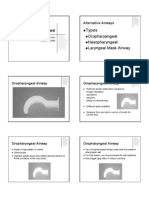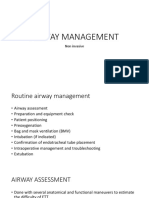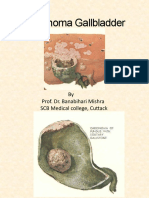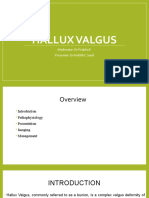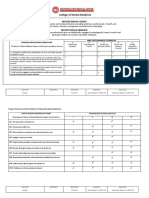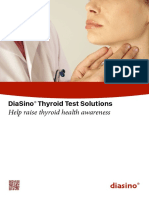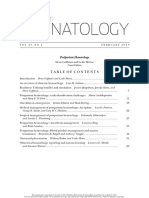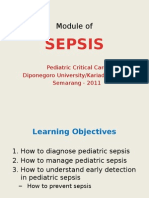0% found this document useful (0 votes)
74 views88 pagesAirway Adjuncts
The document provides an overview of various oxygen therapy devices and airway management techniques, including nasal cannulas, face masks, and advanced airway devices like endotracheal tubes and tracheostomy tubes. It details the indications, contraindications, and insertion techniques for these devices, emphasizing the importance of proper airway management in emergency situations. Additionally, it discusses basic airway maneuvers and the anatomy relevant to airway management.
Uploaded by
portia priyadharshiniCopyright
© © All Rights Reserved
We take content rights seriously. If you suspect this is your content, claim it here.
Available Formats
Download as PPTX, PDF, TXT or read online on Scribd
0% found this document useful (0 votes)
74 views88 pagesAirway Adjuncts
The document provides an overview of various oxygen therapy devices and airway management techniques, including nasal cannulas, face masks, and advanced airway devices like endotracheal tubes and tracheostomy tubes. It details the indications, contraindications, and insertion techniques for these devices, emphasizing the importance of proper airway management in emergency situations. Additionally, it discusses basic airway maneuvers and the anatomy relevant to airway management.
Uploaded by
portia priyadharshiniCopyright
© © All Rights Reserved
We take content rights seriously. If you suspect this is your content, claim it here.
Available Formats
Download as PPTX, PDF, TXT or read online on Scribd
/ 88





